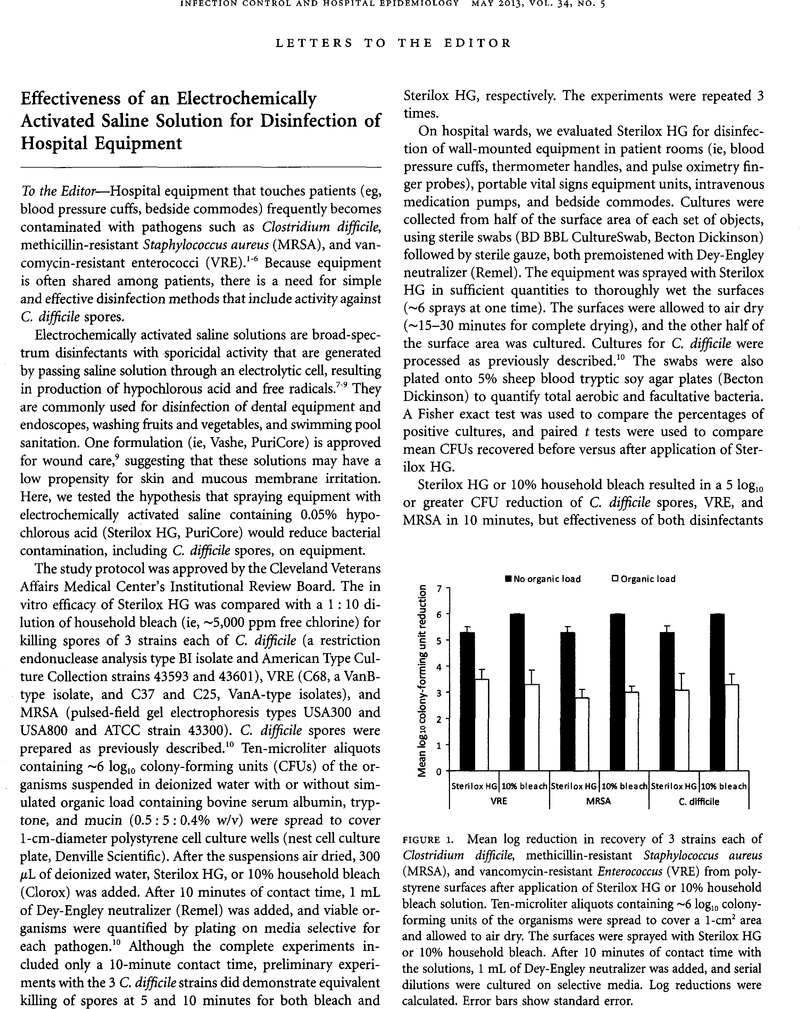Crossref Citations
This article has been cited by the following publications. This list is generated based on data provided by Crossref.
Zhang, Andrew
Nerandzic, Michelle M.
Kundrapu, Sirisha
and
Donskey, Curtis J.
2013.
Does Organic Material on Hospital Surfaces Reduce the Effectiveness of Hypochlorite and UV Radiation for Disinfection of Clostridium difficile?.
Infection Control & Hospital Epidemiology,
Vol. 34,
Issue. 10,
p.
1106.
Weber, David J.
and
Rutala, William A.
2013.
Understanding and Preventing Transmission of Healthcare-Associated Pathogens Due to the Contaminated Hospital Environment.
Infection Control & Hospital Epidemiology,
Vol. 34,
Issue. 5,
p.
449.
Otter, Jonathan A.
Yezli, Saber
and
French, Gary L.
2014.
Use of Biocidal Surfaces for Reduction of Healthcare Acquired Infections.
p.
27.
Dancer, Stephanie J.
Mallon, Julie
Murphy, Rebecca
and
Murch, Cliff
2015.
In-use effect of electrolysed water on transcutaneous oxygen sensors.
Healthcare infection,
Vol. 20,
Issue. 3-4,
p.
141.
Boyce, John M.
2016.
Modern technologies for improving cleaning and disinfection of environmental surfaces in hospitals.
Antimicrobial Resistance & Infection Control,
Vol. 5,
Issue. 1,
Dancer, Stephanie J.
2016.
Dos and don’ts for hospital cleaning.
Current Opinion in Infectious Diseases,
Vol. 29,
Issue. 4,
p.
415.
Rasmussen, Eric D.
and
Williams, Jeffrey F.
2017.
Stabilized hypochlorous acid disinfection for highly vulnerable populations: Brio HOCL™ wound disinfection and area decontamination.
p.
1.
Cobrado, L.
Silva-Dias, A.
Azevedo, M. M.
and
Rodrigues, A. G.
2017.
High-touch surfaces: microbial neighbours at hand.
European Journal of Clinical Microbiology & Infectious Diseases,
Vol. 36,
Issue. 11,
p.
2053.
Fernández, Lucía
Gutiérrez, Diana
Martínez, Beatriz
Rodríguez, Ana
and
García, Pilar
2019.
Antibiotic Drug Resistance.
p.
567.
Tango, Charles Nkufi
Hussain, Mohammed Shakhawat
and
Oh, Deog-Hwan
2019.
Electrolyzed Water in Food: Fundamentals and Applications.
p.
177.
Mourad, Khaldoon A.
and
Hobro, Sture
2020.
Developing chlorine-based antiseptic by electrolysis.
Science of The Total Environment,
Vol. 709,
Issue. ,
p.
136108.



